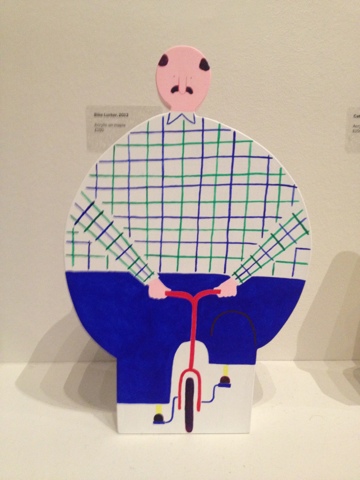Helmshore Textile Mill is nestled in the dip of one of East Lancashire's many valleys, where it has stood for nearly 250 years, a period for most of which it was a working textile mill and the hub of the local community. Today it serves as a lasting reminder of the hard slog faced by hundreds of families who spent their lives working in the regions booming textile industry; it really was grim up north...
The textile industry in Lancashire and throughout the North West of England, has a colourful, promising story with an ending far from happily ever after. It is a story which starts in the 1700's, a period of great exploration, discovery and an English gentry besotted with the 'East' and the 'exotic'. Before this of course, wool and cotton were woven into useable cloth by families in their homes by skilled hand-spinners and handloom weavers, as it provided a useful second income. Wares would be woven as time allowed and sold to the passing trade of chapmen, who would walk their packhorses through the villages and then sell the cloth on markets in nearby towns. There was no industry ruling the lives of people in rural areas, just families getting on with such ‘cottage crafts’. The East India Company was formed, with royal blessing of Her Majesty, Queen Elizabeth I, on 31st December 1600 and was set up to control the trade with India and China. By the 1700’s, this industry was vast and expanding across Europe, with the Dutch East India Company being the largest of its kind. Not only did these companies import new and exciting goods, such as tea, spices and even the humble potato, export was also big business. In the year 1701 around 2 million pounds of raw cotton was imported from America and the West Indies, much of which was spun into cotton and sold on to India.
As the demand for cotton and wool fabric began to swell, not only in the UK, but throughout the rest of the world, the cottages could no longer cope. By the late 18th Century, vast changes were sweeping through the UK, taking the Lancashire cotton spinners with them. The Industrial Revolution had arrived; violently knocking cottage crafts, the homemade and even the villages out of its way. In order to survive, families must follow and go from skilled crafts people to mere cogs in well oiled machines. Such a fate awaited the families of Helmshore when, in 1789 Higher Mill was created by the Turner Family, wealthy textile merchants from the Blackburn area. This mill was primarily concerned with the production of wool.
All members of the family would be roped in to the production of this wool. Firstly, the raw wool fibres are carded to stretch them out in order to spin them into yarn. This was often a job for children who would be provided with carding brushes to pull the fibres apart. The carding brushes used, which Helmshore Mill still had original examples of, were made from tough, spikey teasels that were shipped in from the continent as the hotter temperatures made the European examples hardier than ours. Once the yarns had been spun and a woollen cloth hand-woven, the wool making process got really gruesome. Whilst children as young as six could be made to card the raw fibres, children even younger were necessary for the next part of the woollen cloth making. Being such a starchy fibre, the wool was required to be doused in ammonia before it had a marketable texture. Human urine was used as it was cheap and ammonia rich. The mills would provide local people with ‘piss pots’ which they would be paid one penny for once it had been filled. The phrase ‘not a pot to piss in’ literally means someone is so poor that they can’t even fill a piss-pot for a penny.
At Helmshore, the wool cloth would be washed in urine by large machines powered by the waterwheel. Seeing this in action was really exciting, but also showed off just how cold and loud conditions were for those working long days in the bowels of the mill.
Following this process the wool fabric was washed off and hung to dry on the Lancashire hillsides. As the finished cloth was sold by weight however, it wasn’t always completely dried out in order to make it heavier!
Not very much later, the cotton trade really took off in Lancashire and Whittaker Mill at Helmshore was added to the original Higher Mill. A most impressive demonstration of the cotton weaving process on an original working ‘mule’ machine, really showed off the vast scale of the cotton trade in Lancashire. In one demonstration run, about a meter of cotton fabric was woven, to think there were around 50 million of these machines in the UK at the peak of this industry really put the scale of the cotton trade into perspective.
What Helmshore Mill really excelled at though, was telling the story of the people who were behind these machines and what their daily lives were like. It is a fantastic place and I’m really looking forward to many happy working days there myself. Let’s hope there isn’t trouble at’mill!
































